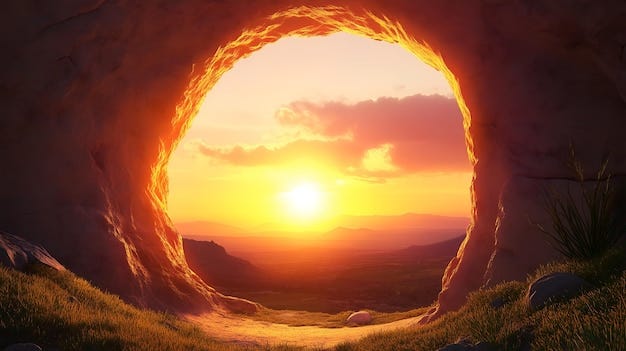A universal view of resurrection
This Easter Sunday, I want to share a different view of resurrection. Not to negate the specific Christian view of resurrection that is celebrated each Easter. On the contrary, perhaps to enhance it even further.
Let’s observe our own bodies, you and I. Just for a moment. (We don’t want to tarry too long because thoughts about diets, exercise, or even facelifts may arise.) Our bodies are not just “one” living thing. For we have alive within and on our bodies about 39 trillion other living things that also make us “who we are”. Without these tiny friends crawling within and all over us, what you call “you” and what I call “me” would not exist. (Gosh, I feel a little bit queasy, and a whole lot grateful, just thinking about it.)
These commonly-once-thought-to-be “alien” microorganisms, which include bacteria, fungi, and viruses, outnumber our individual human cells by a significant margin. But you can bet your butt they are also “who we are”, every bit as much as our bones, our muscles, our inner organs, and our skin.
As the great American poet Walt Whitman wrote, “I am large. I contain multitudes.”
Now all the way to back to the beginning, back to when our universe began. Back when only the lightest elements existed, mostly hydrogen and helium.
Gravity is by far the weakest force in all the universe. (If you don’t think of gravity as being weak, then raise your right hand. If you did so, you just overcame ALL of Earth’s gravity that easily.) Now gravity may be weak, but the old gal more than makes up for it with her ability to work across vast distances. Eventually gravity began to pull much of the hydrogen and helium in the early universe together, leading directly to the birth of stars.
When gravity became almost immeasurably intense, some of these stars were able to create such high density and temperatures that they did what we humans call “going super nova”. These stars exploded their materials across the universe, creating heavy metal along the way. (Let me clarify that. Not heavy metal, as in Led Zeppelin or AC/DC, but “heavy metals” - as in iron, gold, platinum, etc. Yes, I know, I know. For those ‘70s heavy metal rock fan readers, I’m well aware that both Led Zeppelin and AC/DC also produced gold and platinum - of another form.)
Every atom of oxygen in our lungs, of carbon in our muscles, of calcium in our bones, of iron in our blood - were all created inside an exploding star that went supernova, long ago and far away. (Kind of gives calling someone a “rock star” new meaning now, doesn’t it?)
Consider the fantastic journey traveled by every single separate atom in your body over the course of its existence.
In a very real sense (about as real as it can get) all of the matter that makes up you and me has been “resurrected” countless times, in countless forms, over the eons.
Back now to all those microorganisms creeping and crawling in and on our bodies. What happens to our bodies, including all our wonderful little unseen friends, after we die?
It turns out that not only do our countless microbe friends keep us alive, but when our time comes to die, the wee things actually play an important role in recycling our body back to the earth, to help nourish new life - a resurrection, so to speak.
In our universe, everything is interconnected.
In some form or another, everything is recycled.
And in a very real sense, everything is resurrected.
When we begin to grasp all this, it can seem very much as if everything in the universe is really “one”.
But just how intimately interconnected as “one” are we? The answer is perhaps more fascinating that any science fiction. Applying the math of probability and statistics, there’s a really good chance that everyone alive today has at least one atom currently within our bodies that once formed a part of every human who ever lived. Rejoice in wonder and awe. Think about it; at least a few of the atoms residing within your body at this moment were likely once part of Adam and Eve, Abraham Lincoln, and Blackbeard. And since dinosaurs were here for nearly 200 million years (a far longer time than they’ve been extinct), then we can be absolutely for certain that we all share atoms within us that once existed within them. (“Honey, I’ll bet you looked hot as a T Rex.”)
To borrow a quote from Shakespeare,
Keep reading with a 7-day free trial
Subscribe to Hometownstories.org to keep reading this post and get 7 days of free access to the full post archives.


